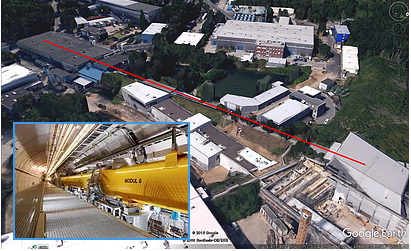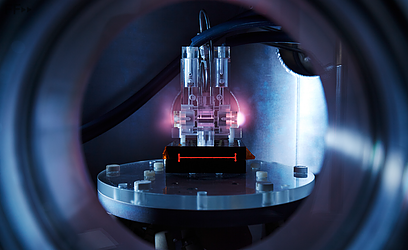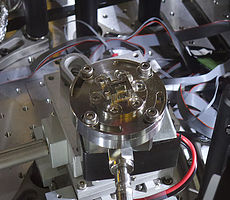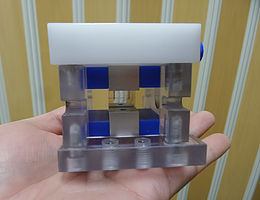People usually imagine that an accelerator has enormous size and it costs a huge amount of money. Conventional accelerators which use radio frequency to accelerate electrons have a limitation in acceleration field of ~100MV/m due to the electrical breakdown of the material. However, laser-driven plasma accelerators have much higher acceleration gradient of ~100GV/m which is about 3 orders of magnitude higher than conventional accelerators.
 Conventional Accelerator
Conventional Accelerator Plasma Wakefield Accelerator
Plasma Wakefield AcceleratorWhen an intense laser pulse passes through a plasma, strong electric field pushes charges away from the laser pulse, called 'Ponderomotive force'. Due to the mass difference between ion and electron, electrons move much faster than the ions. It makes plasma wake seems like wake wave by motor boat on the river. An ion cavity formed behind the laser pulse and it has a large electric field gradient to the outward direction from its center. Plasma accelerators use this field to accelerate electrons.
 Schematics for laser wakefield acceleration
Schematics for laser wakefield acceleration
When an intense laser pulse passes through a plasma, strong electric field pushes charges away from the laser pulse, called 'Ponderomotive force'.
Due to the mass difference between ion and electron, electrons move much faster than the ions. It makes plasma wake seems like wake wave by motor boat on the river. An ion cavity formed behind the laser pulse and it has a large electric field gradient to the outward direction from its center. Plasma accelerators use this field to accelerate electrons.
 gas jet
gas jet
 capillary gas cell (15mm long)
capillary gas cell (15mm long)
 discharged capillary (15mm long)
discharged capillary (15mm long)